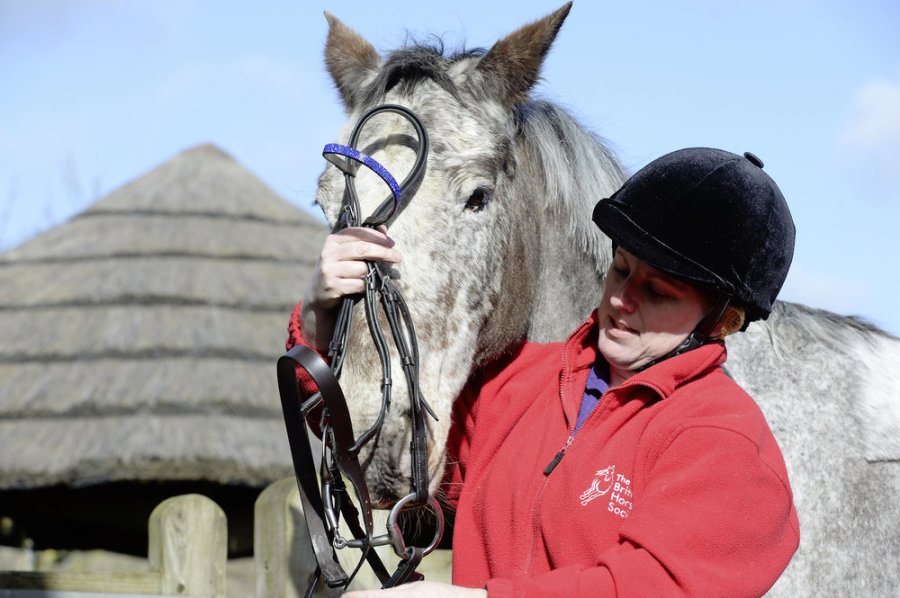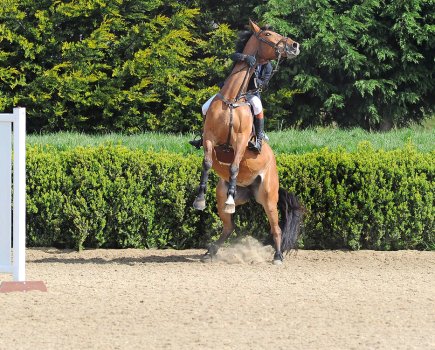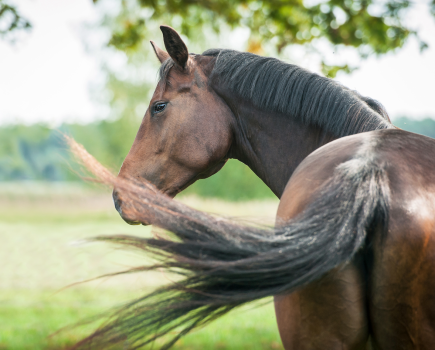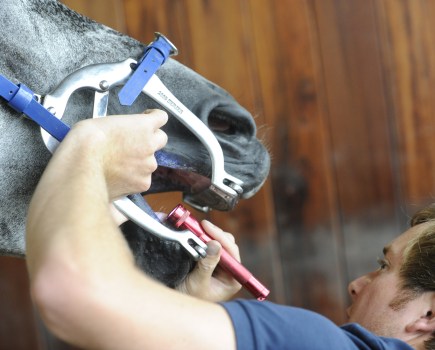Question
I own a five-year-old mare, who was broken last summer. I’ve had her teeth checked and she’s had a new saddle fitted. I’ve tried a flash noseband and a grackle but the tighter it is, the more she fiddles. I’ve also tried loose-ring snaffles, straight bars and French links. She’s always had a tendency to stick her tongue out and has quite a small mouth and a low palate. Do you have any ideas that I can try?
Answer
Tongue evasions are sometimes down to habit, stress or more often than not, discomfort. If you can make her comfortable in the mouth then she should start to relax and quieten. A mouthpiece that takes up little room in the mouth but offers a really good weight-bearing surface is ideal, but you also want to add some stability to help discourage the fiddling. So, a mouthpiece that has less movement in it, that the horse cannot lift the cannons of in the mouth, should help. Comfort is the first priority though. It sounds like she’s opening her mouth to avoid the pressure that the bit’s applying, possibly because it’s touching her palate – as you’ve seen with the flash and Grackle, by forcing the mouth closed around the bit, she’s become worse as the pressure and therefore discomfort would
be increased.
Question
Understanding his mouth shape
What do I look at when assessing my horse’s mouth conformation, and why does it matter when choosing a bit?
Answer
Horses’ heads are fairly consistent in their skeletal dimensions, regardless of their breed, height and gender. It’s the fleshy parts of his face that vary the most.
A horse’s tongue fills the whole of the mouth, but some tongues are larger than others, often bulging through the bars and in these cases we would look for a bit that consumes little space between bars, the tongue and palate.
Get to know his smile
Some horses have quite a short smile (the distance from the muzzle to the corner of the lip) so we’d often choose a bit that sits naturally further back in the mouth.
With horses with a long smile, we have to be careful that the bit doesn’t sit so far back that it touches the premolars.
We also have to be careful that horses with lots of flesh covering their bars don’t end up with this flesh bunched up against their premolars either.
If your horse has pink or fleshy lips, he may be more predisposed to rubs and might be better in a fixed-cheek bit.
Question
Jumping strong in a snaffle
My five-year-old is currently in a loose-ring snaffle but can be strong when approaching fences. I don’t want to over-bit her but I do need her to listen more when I’m jumping. What can I do?
Answer
You should try a mild mouthpiece as we don’t want to punish your horse for being enthusiastic in her work. A bit with a loose lever action, such as a three-ringed gag type bit will give leverage to assist in controlling but by keeping a nice mild mouthpiece you keep her comfy and can easily reward her when she is listening.
Something like the Neue Schule Tranz Angled Lozenge Universal bit is mild in your horse’s mouth and the Universal cheek is extremely versatile in offering varying degrees of control.
It can be used with one rein on the middle ring for a snaffle-type feel, or you can drop down to the bottom ring for more leverage. You can also use two reins, split reins or Pelham roundings to go between the two rings. Another option is to use a curb strap that employs another pressure point, taking pressure away from the poll.
Don’t miss the latest issue of Your Horse Magazine, jam-packed with training and veterinary advice, horse-care tips and the latest equestrian products available on shop shelves, on sale now.









